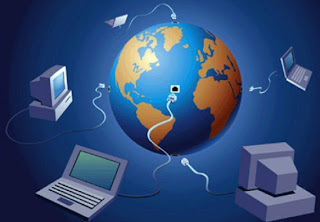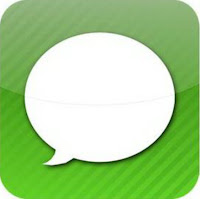
Do you know who was first to launch a 3G network in the world? Yup, the Japanese operator, NTT DoCoMo was the first to launch a 3G network since 10 years ago, precisely on October 1 that has just passed. With fanfare a new speed and real-time videoconferencing or sending and receiving e-mail attachments with 10,000 characters, this innovation is a very important moment in the history of the mobile world.
And to celebrate, the site Mashable has summarized the phone back within one decade that have the most significant movement, where there is a change in large numbers in the industrialized world. Curious? You can simply listen to the following list. Do not forget to give a comment, which one is your favorite, or you may have other candidates.
Danger Hiptop / T-Mobile
The phone was first launched in 2002. Danger Hiptop is the first phone that has great appeal for young kids market. The factor that makes the appeal with nothing more than a pleasant function, with user-friendly interface and features are so easy because the message QWERTY keyboard, large screen, and the support of celebrities. Jay-Z enliven the campaign in a video handset "Excuse Me Miss" for T-Mobile version.
Hiptop successfully demonstrated to the youth mobile market is quite potent and can be targeted marketing. And with the presence of the current Sidekick 4G T-Mobile in the U.S., it seems the brand is still considered to be still quite valuable for almost 10 years.
Motorola RAZR
Motorola RAZR is regarded the best selling clamshell handset. The slim dimensions make it attractive in design, accompanied by a gorgeous metallic keypad. Yes, the RAZR proves that the phone can look beautiful as well as functional.
As the first designer phones available to large markets, the RAZR featured in TV shows and movies with a countless number. Not only that, because the phone is successfully offering "must-have" accessory, which spelled out is one of the first in the world of electronics.
Nokia N95 Symbian
Nokia N95 is a super-smartphone that was released when Nokia was enjoying better fortune. N95 showed that their customers can have a handset that is more than just function to call. Although the first version of chrome has some limitations, but the Finnish company launched the follow up to the black N95 8GB, with increased memory, a bigger screen and better battery life than before.
With a 5MP camera and video recording, GPS with navigation, web browser, email, basic office suite, good multimedia capabilities and gaming N-Gage, N95 showed that the multifunction handset is not just a dream. Nokia market their phones with the slogan "It's what computers have Become," which seems to be the accurate way to describe what can be done when you first handset available in the year 2007.
BlackBerry Curve
RIM BlackBerry Curve suggests doing what some people considered impossible, crossover from one company to the consumer market. By adding the things that are important to consumers, such as the camera and adjust the OS version to a more user-friendly, but still keep the look classic BlackBerry QWERTY, RIM open appeal to a wider range.
Although still to be seen whether RIM will remain in the consumer electronics market in 10 years, but it certainly seems that the success of the Curve gives them confidence to experiment in this arena.
Apple iPhone
In 2007, Apple changed the mobile phone market with the presence of the iPhone, and later in 2008 is even more expanded again with the launch of the App Store. However, the iPhone is not Apple's first mobile handset. Two years earlier, Apple has been working with Motorola to offer what they called the ROKR, the first phone with support for iTunes.
Well .. but it happened, ROKR handset does not seem capable of success, because it is limited to 100 songs. Perhaps many believe that Apple with ROKRnya seek to create their own mobile phones without hardware or software limitations.
Back in 2007, the iPhone offers some features that are quite revolutionary. Although not the first touchscreen phone on the market (PDA's been there for many years), but Apple's bold move with only one physical button almost shocking all the time. Another innovation presented the iPhone is icon-based interface, visual voicemail and multimedia options are easy thanks to the iPod and YouTube apps. Full-featured Safari browser is also very impressive for a handset.
The introduction of the App Store in 2008, the pampering consumers with affordable software application, which has been available previously as a "widget" on other platforms. In the midst of the rigors of competition and the widespread emergence of smartphones with their respective flagship OS, the iPhone has chalked a big name and menjadisalah a major platform in the mobile market today.
T-Mobile G1/HTC Dream
The first Android handset is a pretty big step. Operating System of the combined open handset seems to provide a strong alternative to the iPhone to consumers when other mobile platforms amid faltering.
Rumor had mentioned that the gPhone comes with Gmail, calendar, maps, and YouTube preloaded. Although the G1 is not the phone is quite outstanding, but the phone has 2 important things. G1 provides an opportunity for HTC to enter the Android market and Google's mobile ambitions revealed. And this ambition then realized when I follow up phone based on Android, Nexus One and sell it directly to consumers through its website.
Motorola Droid
Finally, the Motorola Droid handset last appeared as the most influential in the past one decade. Droid is the biggest commercial success of the first Android platform in the U.S.. Verizon presented as a direct competitor to the iPhone at the time. While the versions in other countries are not doing well enough, Droid resolutely open on the OS map of American consumers.
How, which is your favorite, or maybe there is another list that you want to add?
Thanks for reading
7 Most Influential Mobile Phone in Last 10 Years
Click
7 Most Influential Mobile Phone in Last 10 Years to read the article in Bahasa Indonesia.






























.JPG)

